And so, after all the hard work, the Crypt Concert came on Friday in a myriad shimmering sounds and colours.
Gathering for the rehearsal in the Crypt in the afternoon, we started by singing not the first piece in the programme, but the mesmerising opening phrases of Lauridsen’s O nata lux; I’d been promising the Choir that singing in the richly resonant acoustics of the Cathedral’s Norman crypt would be worth the wait, and I wanted the group’s first musical steps in the crypt to be memorable.
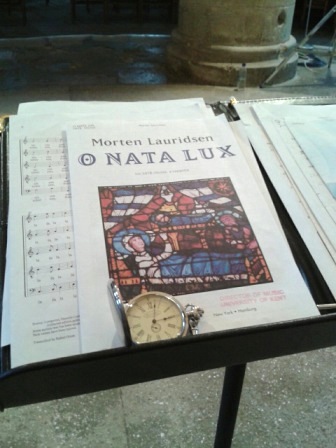
Purple patch
As soon as we’d released the first eight chords into the space, there was infectious grinning blossoming all around the singers; this was what we’d come for. The slow unfurling of the piece’s rich harmonic colour was an especial treat in the surroundings of the crypt, and we could allow time aplenty for the colours of the chords to breathe in the space before moving onto the next phrase.
All that afternoon, we tested the acoustics to the limit with the repertoire for the evening, working out just how quietly we could sing, how diligent we had to be in articulating the consonants, how to close the vowels and resonate on ‘m’s and ‘n’s in order to hear that final hum work its way around the space. There was a palpable air of excitement building throughout the afternoon – we were absolutely ready, and looking forward to the concert. Experimenting with singing Dawn at the back of the crypt, the choice was made actually to sing it in situ rather than gathering behind the audience, as the acoustics worked better.
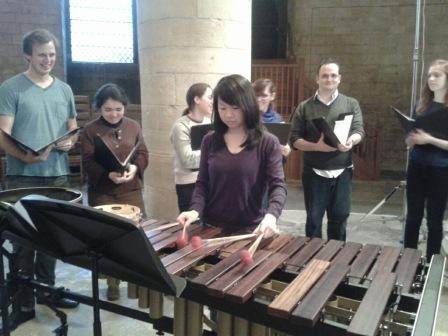
Percussionist Carina Evans rehearsing the ‘Forgotten Children’s Songs’
The evening concert went like a dream – from the vibrant opening of Pitoni’s Cantate Domino, through the evocative textures of the two solo marimba pieces from percussionist Carina Evans, through the lithe works conducted by second-year student Emma Murton, culminating in the final ‘Hai!’ of the robust final Dance from the Forgotten Children’s Songs, the musicians were on top form, and gave of their very best.

In fine form
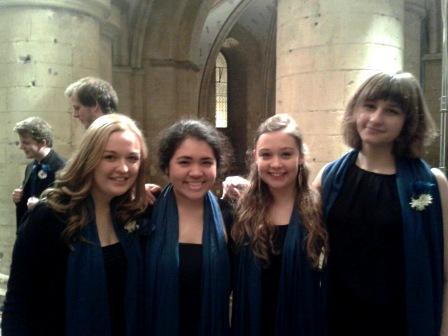
The ladies of the alto section
So my deepest thanks to all the performers, who have worked tirelessly over the past few months; it was a truly memorable concert, and you rose to the occasion magnificently.
Now on to the new repertoire…

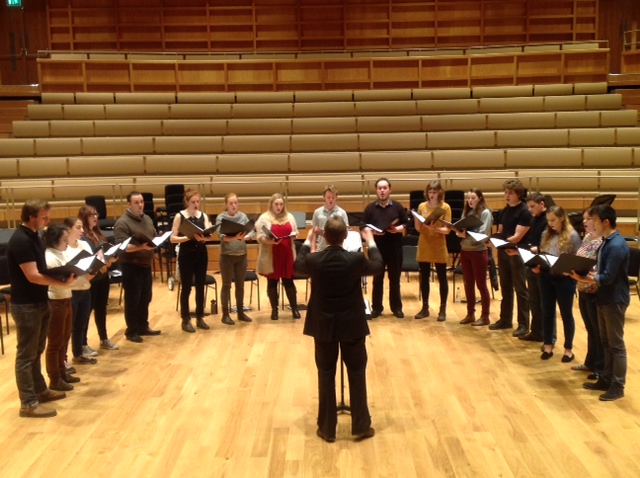
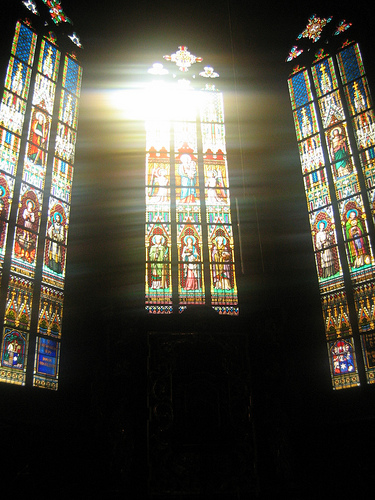

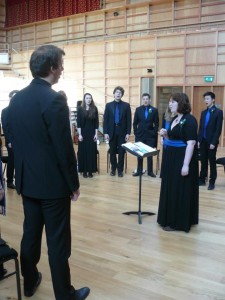

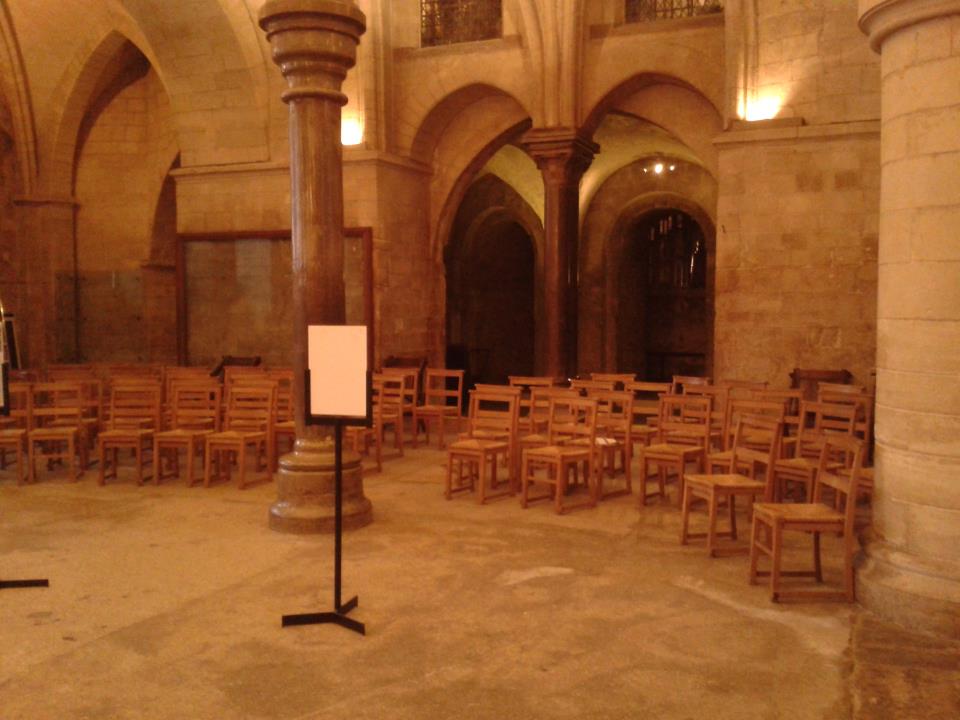


 There was some shuffling around, we arranged ourselves in the new line-up, and sang through Vaughan Williams’ arrangement of ‘The Truth from Above.” The last chord died away, and there was something of an extended silence; we could, I think, all feel that something significant had just happened. The ensemble sound had changed completely. The balance was better; with the sopranos (who are normally the more dominant of the voices) now standing in the middle, the sound was no longer left-hand-heavy; the altos and tenors, now standing on either end, could now be heard more clearly, and because the basses were now also in the middle, everyone could now hear the bottom of the chords and tune to them better.
There was some shuffling around, we arranged ourselves in the new line-up, and sang through Vaughan Williams’ arrangement of ‘The Truth from Above.” The last chord died away, and there was something of an extended silence; we could, I think, all feel that something significant had just happened. The ensemble sound had changed completely. The balance was better; with the sopranos (who are normally the more dominant of the voices) now standing in the middle, the sound was no longer left-hand-heavy; the altos and tenors, now standing on either end, could now be heard more clearly, and because the basses were now also in the middle, everyone could now hear the bottom of the chords and tune to them better.

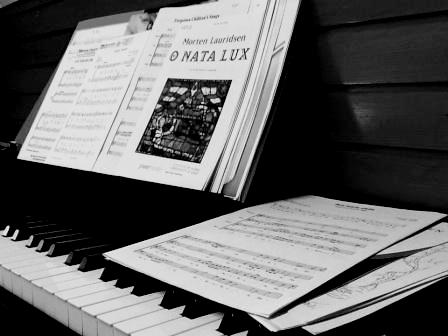
 This is, for me, probably the lowest point in the year; the sense that, after a year’s committed rehearsing and music-making, the Choirs are reaching the final moment, after which they’ll never exist again. By which, of course, I don’t mean that the University Chamber Choir and Cecilian Choir won’t appear again – they’ll be re-incarnated next year, after a flourish of auditions, and take on a new year’s worth of concert commitments. But it will be the last time the Choirs exist in their present form, with their current members. Some of the students are graduating in July; some are taking a year abroad as part of their studies; some are only here for a year.
This is, for me, probably the lowest point in the year; the sense that, after a year’s committed rehearsing and music-making, the Choirs are reaching the final moment, after which they’ll never exist again. By which, of course, I don’t mean that the University Chamber Choir and Cecilian Choir won’t appear again – they’ll be re-incarnated next year, after a flourish of auditions, and take on a new year’s worth of concert commitments. But it will be the last time the Choirs exist in their present form, with their current members. Some of the students are graduating in July; some are taking a year abroad as part of their studies; some are only here for a year.